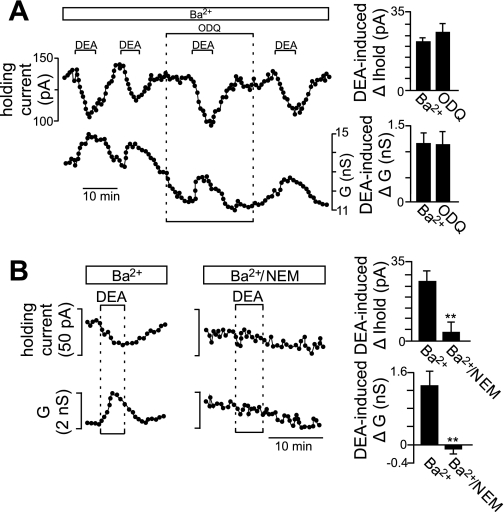Fig. 8.
NO modulates HCN channels by an S-nitrosylation-dependent mechanism. A: traces of holding current and conductance show that exposure to DEA in Ba2+ (2 mM) activated an inward current with properties similar to Ih (Figs. 3 and 5). Inhibition of soluble guanylyl cyclase with ODQ (10 μM) did not affect NO modulation of Ih. Bar graphs at right show summary data (n = 6) plotted as DEA-induced changes in holding current and conductance in Ba2+ alone and in Ba2+ plus ODQ. B: traces of holding current and conductance show the characteristic DEA response in Ba2+. A second exposure to DEA after incubation in the cysteine-specific oxidant N-ethylmaleimide (NEM; 300 μM) this time had little effect on holding current or conductance. Bar graphs at right show summary data (n = 5) plotted as DEA-induced changes in holding current and conductance in Ba2+ alone and in Ba2+ plus NEM. Together, these results strongly support the possibility that NO activates Ih by a S-nitrosylation-dependent mechanism.

